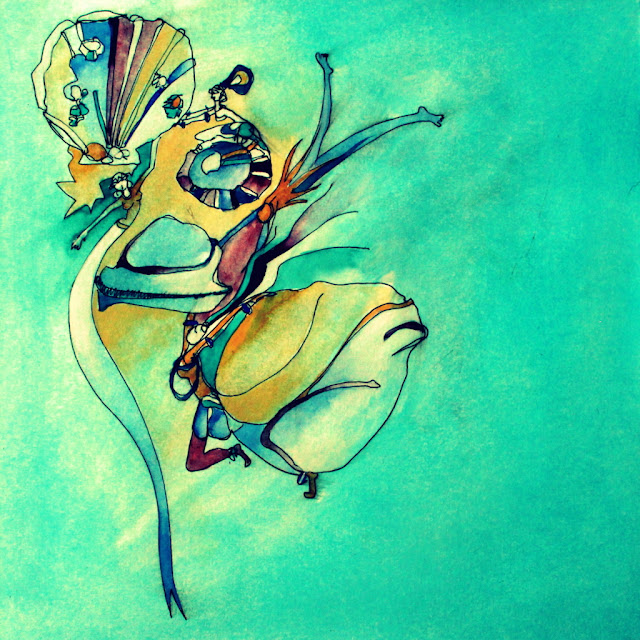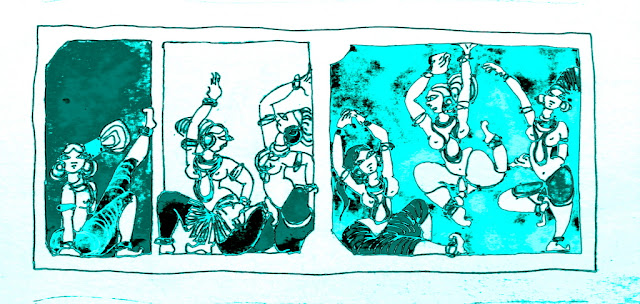Throughout my life I have struggled as much with the idea of 'representational/figurative' as I have with 'non-representational/abstract'.
Here are two drawings from 1980.
There was a satisfaction in working with these shapes and tones, and making compositional choices. But something was wrong. Not wrong in the sense that people who make this kind of drawing are in any way mistaken, but wrong for me; wrong for my purpose (unknown).
When I went to India to work in the mid 1980s, I wasn't doing much. But after a few days of sitting in my roof top room looking at the monsoon clouds hovering above the valley below, I felt something move.
Being there unlocked a kind of magical freedom. Every day I drew continuously (in the sense that I just started drawing and didn't stop, my pencil never leaving the page) and without thought. My line seemed to have finally broken free.
But one day I had to leave, and the line went back into its cage. Nothing happened after that for a long time.
I was left, though, with a sense of the spirit of the free line. Later I would study Indian, Chinese and Japanese art and find out about a different aesthetic. A different purpose for art. Not for individual expression. Not for the representation of externally observable forms. This art was motivated by a more internal impulse, a desire to make the viewer
feel the energy and flow of life itself
In the many twists and turns that followed, I never gave up the idea of somehow finding a way to make art that expressed this feeling of life. But I could never see a way to do it. Every time I drew something that was in front of me, a 'representational' drawing, it felt dead, lifeless. Every time I tried to go away from the representational, it felt pointless. In the end I gave up.
How I found my way back is another story. In the end life found a way to come through when I wasn't looking, crept in by the back door.
This reminiscing was prompted by my making a 'representational' painting of the horizon a day or so ago. I didn't paint what was in front of me. I looked at the sea for a long time. Then I came home and painted how it lived in my memory, how it felt.
It still looked like a bit of a pointless representational image ('Why do that? Hundreds of thousands of artists make paintings of the sea every day. There are enough people working on that, and most of them will make more interesting images than me'). It's not that I'm 'trying to be original'. I just bore myself. I want to make an image that interests me, an image that surprises me...
So I made a new kind of image from the painting.
That would do for that day.
.






















































